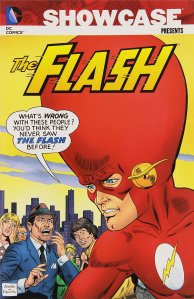Contents: The Losers stories from G.I. Combat #138 (October 1969), and Our Fighting Forces #123 (January-February 1970) to #150 (August-September 1974)
Key Creator Credits: Robert Kanigher, Joe Kubert, Ross Andru, John Severin, and others
Key First Appearances: Ona Tomsen
Overview: In his play The Tempest, William Shakespeare wrote, “Misery acquaints a man with strange bedfellows.” That easily describes the situation for the members of the Losers – a group of soldiers that have lost their original units. These orphans come together in a special unit that gets assigned the missions that no one else in their right mind would ever volunteer for.
The Losers consist of four soldiers, all previously featured in their own stories by writer Robert Kanigher for the various DC war titles.
- Captain Storm is the former commander of a PT boat, which was destroyed in battle and the crew lost. Storm lost his lower left leg in an earlier battle and uses a wooden leg to get around.
- Johnny Cloud, a Navajo pilot who is the sole survivor of his squadron and appears to always fly the final flight of any plane.
- Gunner and Sarge, a two-man team from the trenches who always appear to be the last two standing from any firefight.
The four men, originally brought together by the Haunted Tank, primarily take on missions in Europe. However, getting assigned missions in the Pacific and Africa is not out of the picture. The Losers are given assignments, and each man goes into the battle thinking that this will be their final mission. When they survive the mission, they realize that the Losers find a way to fight again another day.
As the title develops under Kanigher and artists Ross Andru and John Severin, the story starts to become an ongoing narrative from issue to issue. On one mission, it appears that Captain Storm is killed in a bomb explosion. He is soon replaced by Ona Tomsen, a female member of the Norwegian Resistance Unit who views herself as a loser, being the sole survivor of her village. Thankfully Storm returns to the team, after a brief foray as a pirate, thanks to amnesia from the explosion.
Why should these stories be Showcased?: The concept of the Losers is perhaps more important than the specific characters themselves. The concept (and the characters) are revisited quite frequently over the years, whether it is continuing their original story or assigning the concept to a new group of characters, as seen in the 2002 Vertigo series. The stories are just long enough to tell a decent tale, without getting caught up in repeating the same story formula issue after issue.
If you like this volume, try: Jack Kirby’s take on the Losers. Kanigher and Severin’s run with the Losers came to an end with Our Fighting Forces #150. Beginning with the next issue, Kirby did a 12-issue run with Captain Storm, Johnny Cloud, Sarge, and Gunner. Like so many other Kirby books in that era, the initial reaction appears to be less than positive, with long-time readers not appreciating Kirby’s approach. Over the years, fans have flocked back to this run as one of Kirby’s last great DC arcs. The entire run was reprinted in 2009 has a hardcover edition.










